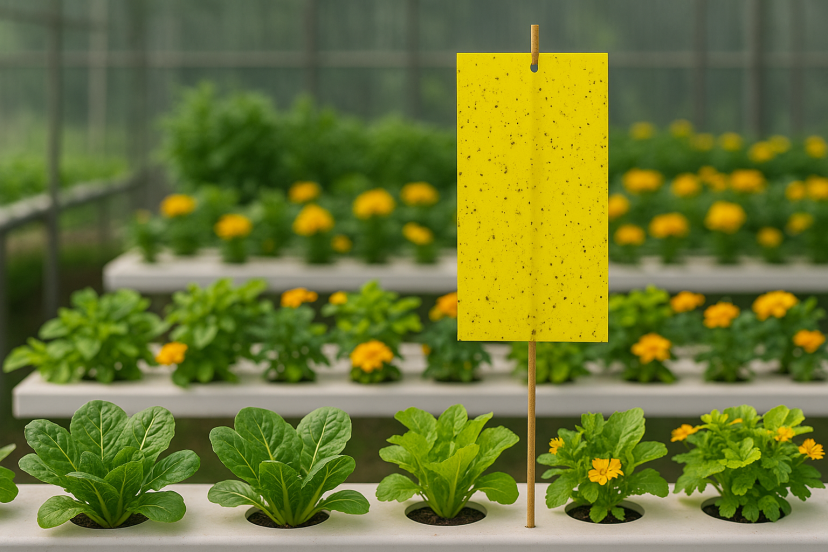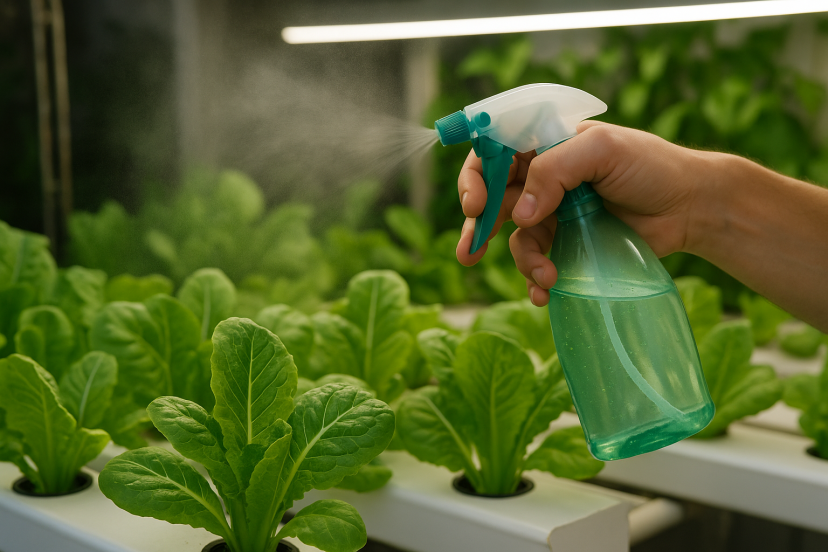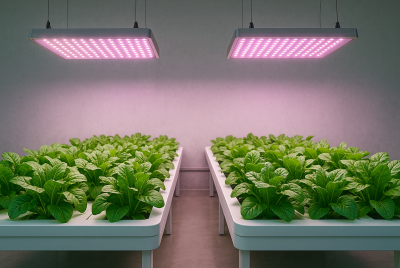Natural Pest Control in Hydroponics: 7 Biocontrol Options
We may earn a commission for purchases made using our links. Please see our disclosure for more details.
Hydroponic gardening offers clean, controlled, and high-yield growing, but even in these near-perfect conditions, pests like aphids, spider mites, and whiteflies can still find their way in. The challenge is that traditional pesticides often harm beneficial microbes and contaminate your nutrient solution, disrupting the delicate balance your plants rely on. If you’ve ever felt frustrated watching your crops struggle despite your best care, you’re not alone—but here’s the good news: natural pest control in hydroponics isn’t just possible, it’s highly effective. In this guide, you’ll discover seven science-backed biocontrol options that keep your plants healthy and thriving—no harsh chemicals required.
Why Natural Pest Control Works Best in Hydroponics
Hydroponics relies on a delicate balance of nutrients, water, and oxygen. Chemical pesticides can upset that balance, reducing yields and contaminating edible plants. Natural pest control methods use beneficial organisms and eco-safe solutions to keep your ecosystem thriving without compromising food safety or nutrient quality.
According to Eden Green’s guide on pest management in hydroponics, relying on natural solutions helps protect beneficial microbes while keeping plants healthier and more productive. The article highlights how integrated pest management (IPM) approaches—using biological controls, regular monitoring, and environmental adjustments—can drastically reduce chemical dependency.
Similarly, a Farmonaut study on herbal pest control in hydroponic systems emphasizes the efficiency of plant-based repellents and biocontrol agents in maintaining water purity and nutrient balance. Herbal extracts like neem and lemongrass have shown strong pest-repelling effects without leaving harmful residues.
For a thriving garden, pair your pest control methods with high-quality hydroponic nutrients.

1. Beneficial Insects: Nature’s Microscopic Bodyguards
Sometimes the best way to fight bugs is with more bugs. Introducing beneficial insects like ladybugs and lacewings can naturally reduce aphid, thrip, and whitefly populations. Ladybugs consume up to 50 aphids a day, while lacewing larvae feed on mites and small caterpillars.
A study from the Journal of Biological Control (2023) found that integrating predatory insects into hydroponic systems reduced pest pressure by over 70% within two weeks—without chemical residues.
Pro Tip: Always release these insects in the evening to prevent them from flying away immediately.
2. Neem Oil: The Organic All-Rounder
Derived from the neem tree, neem oil disrupts insect growth and feeding behavior. It’s safe for most plants and biodegradable, making it a go-to for organic growers.
Mix a small amount (about 1–2 teaspoons per quart of water) and spray directly on leaves. Be sure to apply when lights are off to avoid leaf burn.
A study published in Environmental Science and Pollution Research (2022) highlights neem’s dual benefits—it not only deters pests but also enhances plant immunity.
3. Bacillus thuringiensis (Bt): The Microbial Pest Assassin
Bt is a naturally occurring soil bacterium that specifically targets caterpillars and fungus gnats. It works by producing proteins that damage the digestive systems of larvae—without affecting humans or beneficial insects.
Add Bt-based products to your nutrient solution or apply them to plant surfaces for fast, targeted results.
Fun Fact: Bt is so safe it’s used in organic-certified farms worldwide.
4. Sticky Traps: The Simple Yet Effective Strategy
Sticky traps might not sound “high-tech,” but they’re one of the most effective monitoring tools in hydroponics. These bright-colored cards attract flying pests like gnats and whiteflies, helping you spot infestations early.
Place traps near your grow lights or nutrient reservoirs to catch adult pests before they breed. They’re inexpensive, chemical-free, and easy to replace.

5. Predatory Mites: Tiny Heroes Against Spider Mites
Spider mites thrive in warm, dry conditions—exactly what many hydroponic growers prefer. Instead of spraying pesticides, introduce Phytoseiulus persimilis, a natural predator that hunts spider mites relentlessly.
Research from the International Journal of Acarology (2021) found that introducing predatory mites reduced spider mite populations by 85% in just 10 days.
Tip: Release predatory mites early, as they’re most effective when populations are still small.
6. Hydrogen Peroxide: For Root Zone Pest Prevention
While typically known for sterilization, diluted hydrogen peroxide (H₂O₂) can also prevent root pests like fungus gnats. Add a mild solution (3% H₂O₂ diluted to 1 part per 3 parts water) to your nutrient reservoir every few weeks.
It oxidizes organic matter, keeps roots oxygenated, and eliminates larvae without harming the plants. Just don’t overuse it—moderation is key.
7. Companion Planting and Essential Oils
Certain plants—like basil, mint, and marigold—naturally deter pests through their scent. You can grow them alongside your hydroponic setup or use essential oils derived from these plants.
For example, rosemary oil repels thrips, while peppermint oil deters aphids. Always dilute essential oils with water and a few drops of mild soap before spraying.
Top 5 Products for Natural Pest Control
| Product | Description | Link |
| Neem Bliss 100% Pure Cold Pressed Neem Oil | Organic, plant-safe neem oil perfect for hydroponic pest control. | View on Amazon |
| Sticky Yellow Insect Traps | Pack of 50 cards for early pest detection. | View on Amazon |
| Garden Safe Bt Caterpillar Killer | Targets larvae and caterpillars naturally. | View on Amazon |
| Live Ladybugs (1,500 Count) | Great for releasing in hydroponic gardens to control aphids. | View on Amazon |
| Phytoseiulus Persimilis Predatory Mites | The best biological control for spider mites. | View on Amazon |
Common Mistakes to Avoid
- Overusing sprays: Even natural oils can clog plant pores if over-applied.
- Ignoring root pests: Focus isn’t just on leaves—fungus gnats often start in the root zone.
- Skipping monitoring: Regular trap checks help prevent full-blown infestations.
Consistency, observation, and patience are the keys to success.
Conclusion
Natural pest control in hydroponics is more than just a sustainable choice—it’s a smart, long-term investment in your plants’ health and your system’s balance. By using beneficial insects, microbial agents, and organic solutions instead of synthetic chemicals, you’re nurturing a cleaner, safer, and more productive growing environment. These methods not only protect your crops from harmful pests but also preserve the essential microorganisms that help your plants thrive. In the end, achieving pest-free hydroponics isn’t about fighting nature—it’s about working with it.
FAQs
1. Can I use natural pest control methods with any hydroponic system?
Yes. Whether you’re using NFT, DWC, or aeroponics, natural controls work safely across all systems.
2. How frequently should I use neem oil?
Apply every 7–10 days or after heavy pest activity, but avoid spraying under direct light.
3. Are beneficial insects suitable for indoor hydroponics?
Absolutely. They thrive in controlled environments if humidity and temperature are balanced.
4. Will hydrogen peroxide harm plant roots?
Not when diluted properly. Use a mild mix to oxygenate and sterilize without damage.
5. What’s the best prevention tip for hydroponic pests?
Clean your system regularly, monitor with traps, and quarantine new plants before adding them to your setup.




